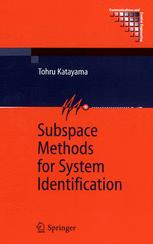

Most ebook files are in PDF format, so you can easily read them using various software such as Foxit Reader or directly on the Google Chrome browser.
Some ebook files are released by publishers in other formats such as .awz, .mobi, .epub, .fb2, etc. You may need to install specific software to read these formats on mobile/PC, such as Calibre.
Please read the tutorial at this link: https://ebookbell.com/faq
We offer FREE conversion to the popular formats you request; however, this may take some time. Therefore, right after payment, please email us, and we will try to provide the service as quickly as possible.
For some exceptional file formats or broken links (if any), please refrain from opening any disputes. Instead, email us first, and we will try to assist within a maximum of 6 hours.
EbookBell Team

4.8
84 reviewsSystem identification provides methods for the sensible approximation of real systems using a model set based on experimental input and output data. Tohru Katayama sets out an in-depth introduction to subspace methods for system identification in discrete-time linear systems thoroughly augmented with advanced and novel results. The text is structured into three parts.
First, the mathematical preliminaries are dealt with: numerical linear algebra; system theory; stochastic processes; and Kalman filtering. The second part explains realization theory, particularly that based on the decomposition of Hankel matrices, as it is applied to subspace identification methods. Two stochastic realization results are included, one based on spectral factorization and Riccati equations, the other on canonical correlation analysis (CCA) for stationary processes. Part III uses the development of stochastic realization results, in the presence of exogenous inputs, to demonstrate the closed-loop application of subspace identification methods CCA and ORT (based on orthogonal decomposition).
The addition of tutorial problems with solutions and Matlab® programs which demonstrate various aspects of the methods propounded to introductory and research material makes Subspace Methods for System Identification not only an excellent reference for researchers but also a very useful text for tutors and graduate students involved with courses in control and signal processing. The book can be used for self-study and will be of much interest to the applied scientist or engineer wishing to use advanced methods in modeling and identification of complex systems.